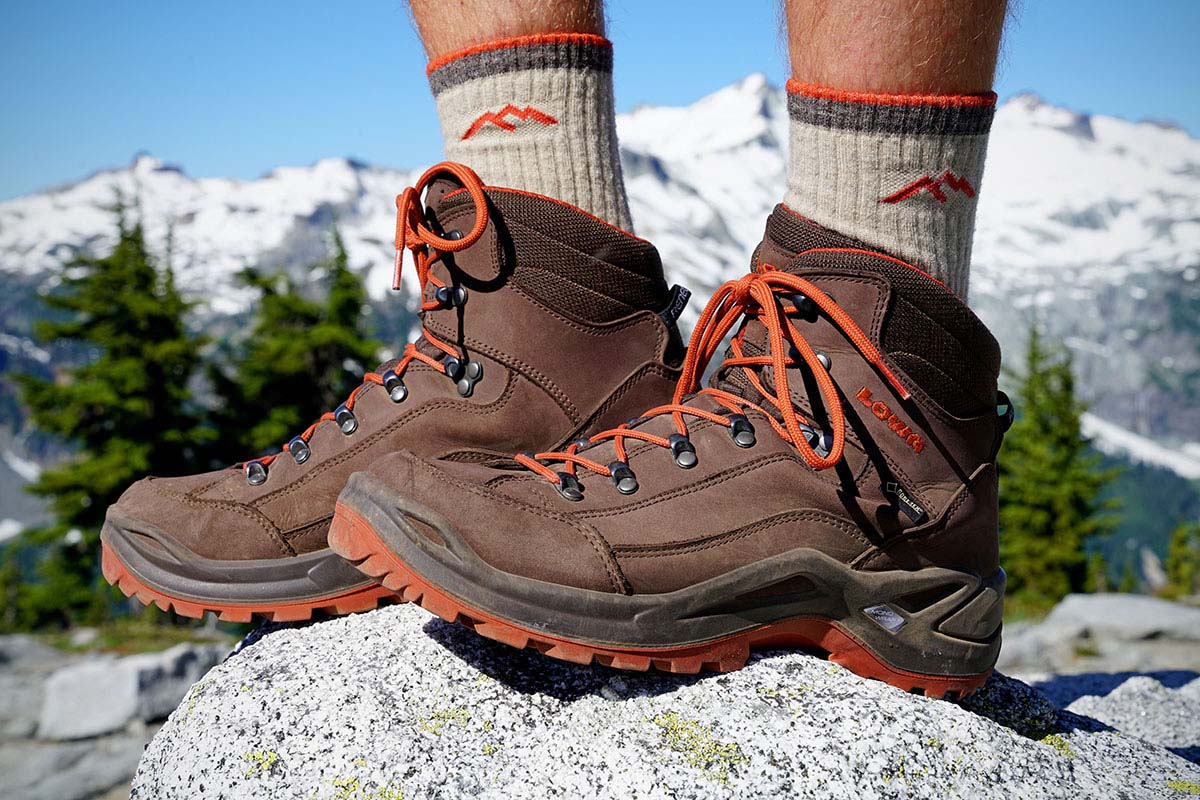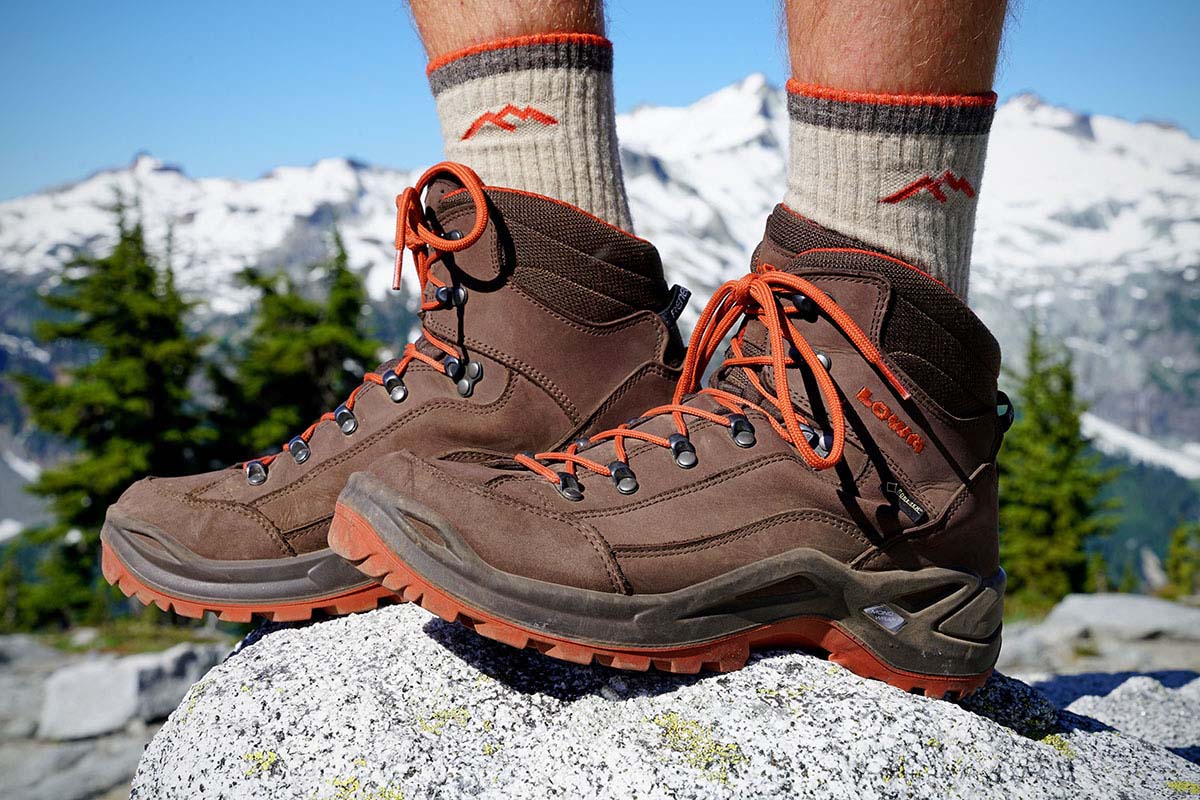Footwear hiking is crucial for a safe and enjoyable experience. Choosing the right boots or shoes significantly impacts comfort, performance, and injury prevention. This guide explores various footwear types—from sturdy hiking boots to lightweight trail runners—detailing their features, benefits, and suitability for different terrains and hiking styles. We’ll cover everything from selecting the perfect fit to maintaining your footwear and understanding the latest technological advancements.
Understanding the nuances of hiking footwear goes beyond simply picking a pair of shoes. It involves considering factors like your experience level, the type of terrain you’ll be tackling, and the climate you’ll be hiking in. We’ll delve into the importance of proper fit, discussing key components like heel counters and midsoles, and how these elements contribute to overall comfort and support.
We’ll also explore common hiking injuries linked to footwear choices and offer advice on prevention and treatment.
Choosing the Right Hiking Footwear
Selecting the right hiking footwear is crucial for a safe and enjoyable experience. The wrong boots can lead to blisters, foot pain, and even serious injuries, significantly impacting your hike. Consider your experience level, the type of terrain you’ll encounter, and the climate conditions when making your choice.
Hiking Experience and Footwear Choice
Beginner hikers often benefit from lighter, more supportive hiking shoes, which offer good ankle stability without the bulk of a heavy boot. These are suitable for well-maintained trails and shorter distances. Experienced hikers, tackling more challenging terrain or carrying heavier packs, might opt for sturdy, high-cut hiking boots that provide excellent ankle support and protection from rough terrain.
For instance, a seasoned hiker embarking on a multi-day backpacking trip in rocky mountains would prioritize robust boots over lightweight shoes.
Terrain and Climate Considerations
The terrain dictates the type of sole and overall boot construction needed. Rocky trails demand boots with stiff midsoles and aggressive tread patterns for better grip and protection. Muddy or wet conditions require waterproof or water-resistant boots with good drainage to prevent your feet from getting soaked. Similarly, hot and dry climates might call for breathable boots to prevent overheating and excessive sweating, while cold, snowy conditions necessitate insulated boots with good traction on ice and snow.
A hiker planning a trek through the Appalachian Trail, known for its varied terrain and changing weather, would need versatile boots capable of handling both mud and rocky ascents.
Proper Fit and its Importance
Proper fit is paramount. Ill-fitting boots are the leading cause of hiking injuries. Too-tight boots restrict blood flow, leading to numbness, blisters, and even frostbite in cold conditions. Too-loose boots cause instability and increase the risk of ankle sprains. Your toes should have ample space to wiggle, even when descending steep slopes.
Enhance your insight with the methods and methods of waterproof hiking boots women.
The heel should sit snugly without slipping, and the boot should provide sufficient arch support. Ignoring proper fit can ruin a hike and potentially lead to long-term foot problems.
Components of a Well-Fitting Hiking Boot, Footwear hiking
Several key components contribute to a well-fitting hiking boot. The heel counter provides stability and prevents the heel from slipping. The insole offers cushioning and arch support, affecting comfort and reducing fatigue. The midsole provides shock absorption and support, influencing stability and comfort during long hikes. A high-quality insole, for example, can significantly reduce the impact on your joints during strenuous hikes.
The upper material should be breathable and durable, while the outsole should offer sufficient traction for the intended terrain.
Decision-Making Flowchart for Choosing Hiking Footwear
Imagine a flowchart. The first decision point would be: “Beginner hiker or experienced hiker?” If beginner, the path leads to “Lightweight hiking shoes suitable for well-maintained trails.” If experienced, the path branches into: “What is the primary terrain?” (Rocky, muddy, etc.). Each terrain type leads to specific boot recommendations (e.g., stiff-soled boots for rocky terrain, waterproof boots for muddy conditions).
A further branching point would be “What is the climate?” (Hot, cold, etc.), again leading to recommendations based on breathability or insulation. The final outcome is a specific recommendation for a type of hiking footwear tailored to the individual hiker’s needs.
Footwear and Hiking Injuries

Hiking, while a rewarding activity, can unfortunately lead to injuries if proper precautions aren’t taken. A significant factor in preventing these injuries is choosing and using appropriate footwear. The wrong shoes can quickly turn a pleasant hike into a painful experience, potentially leading to long-term problems.
Common Hiking Injuries Related to Footwear
Improper footwear is a leading cause of several common hiking injuries. Blisters, sprains, and plantar fasciitis are among the most prevalent. Blisters result from friction between the skin and the inside of the shoe, often exacerbated by ill-fitting footwear or socks. Sprains occur when the ligaments supporting the ankle are overstretched or torn, frequently due to inadequate ankle support in the boots.
Plantar fasciitis, characterized by pain in the heel and arch, can be aggravated by insufficient arch support and cushioning in the footwear. These injuries not only disrupt the hiking experience but can also lead to prolonged discomfort and recovery time.
Preventing Hiking Injuries Through Proper Footwear
Selecting the right hiking boots is crucial for injury prevention. Boots should offer adequate support, cushioning, and protection. Proper fit is paramount; boots that are too tight can restrict blood flow and increase the risk of blisters, while boots that are too loose can lead to instability and sprains. Features like a stiff sole for stability on uneven terrain, a good ankle support system, and breathable materials to prevent overheating and moisture buildup are all important considerations.
Choosing footwear appropriate for the terrain is also essential; lightweight trail runners are suitable for well-maintained trails, while heavier, more supportive boots are necessary for rugged or challenging terrain.
Breaking in New Hiking Boots
New hiking boots should never be worn on a long hike straight out of the box. It’s crucial to break them in gradually to avoid blisters and discomfort. Start by wearing them around the house for short periods, gradually increasing the duration and intensity of wear. Consider wearing thicker socks during the break-in period to help mold the boots to your feet.
Short walks on relatively flat surfaces are a good next step before tackling more challenging terrain. Ignoring this crucial step significantly increases the risk of foot injuries during a hike.
Addressing Common Foot Problems During Hiking
Even with proper footwear, foot problems can sometimes arise during long hikes. Addressing these issues promptly is vital to prevent them from worsening. Blisters should be treated with care, keeping them clean and covered with appropriate blister dressings. If a sprain is suspected, rest, ice, and elevation are recommended, and medical attention should be sought if necessary.
For plantar fasciitis, stretching exercises and supportive insoles can help alleviate pain. Carrying a small first-aid kit with blister treatment, pain relievers, and compression bandages is highly recommended for any hike.
Ultimately, the perfect hiking footwear is a personal choice, heavily influenced by individual needs and preferences. By carefully considering the factors discussed—footwear type, fit, maintenance, and technological advancements—you can confidently select the ideal footwear for your next adventure, ensuring comfort, safety, and a more enjoyable hiking experience. Remember, investing in quality footwear is an investment in your comfort and the longevity of your hiking adventures.
Answers to Common Questions: Footwear Hiking
How often should I replace my hiking boots?
The lifespan of hiking boots varies depending on usage and terrain, but generally, you should replace them every 6 months to a year of regular use, or sooner if significant wear and tear is evident.
Can I wear trail runners for backpacking?
Trail runners are suitable for shorter, less technical backpacking trips, but for longer, more demanding treks, hiking boots offer better ankle support and protection.
What’s the best way to break in new hiking boots?
Wear your boots around the house for short periods, gradually increasing the duration. Consider using thick socks and potentially adding padding in problem areas. Avoid wearing them on long hikes immediately.
How do I treat blisters while hiking?
Clean the blister, cover it with a blister bandage or moleskin, and avoid putting pressure on the area. If it’s severe, consider seeking medical attention.


